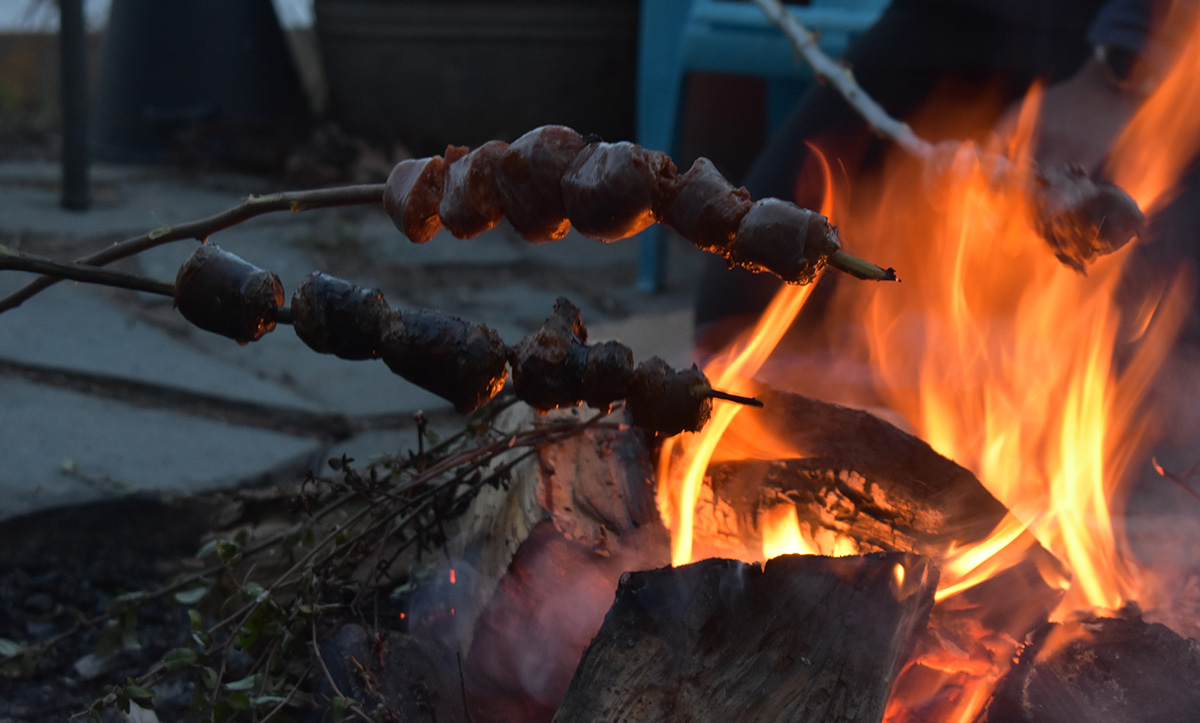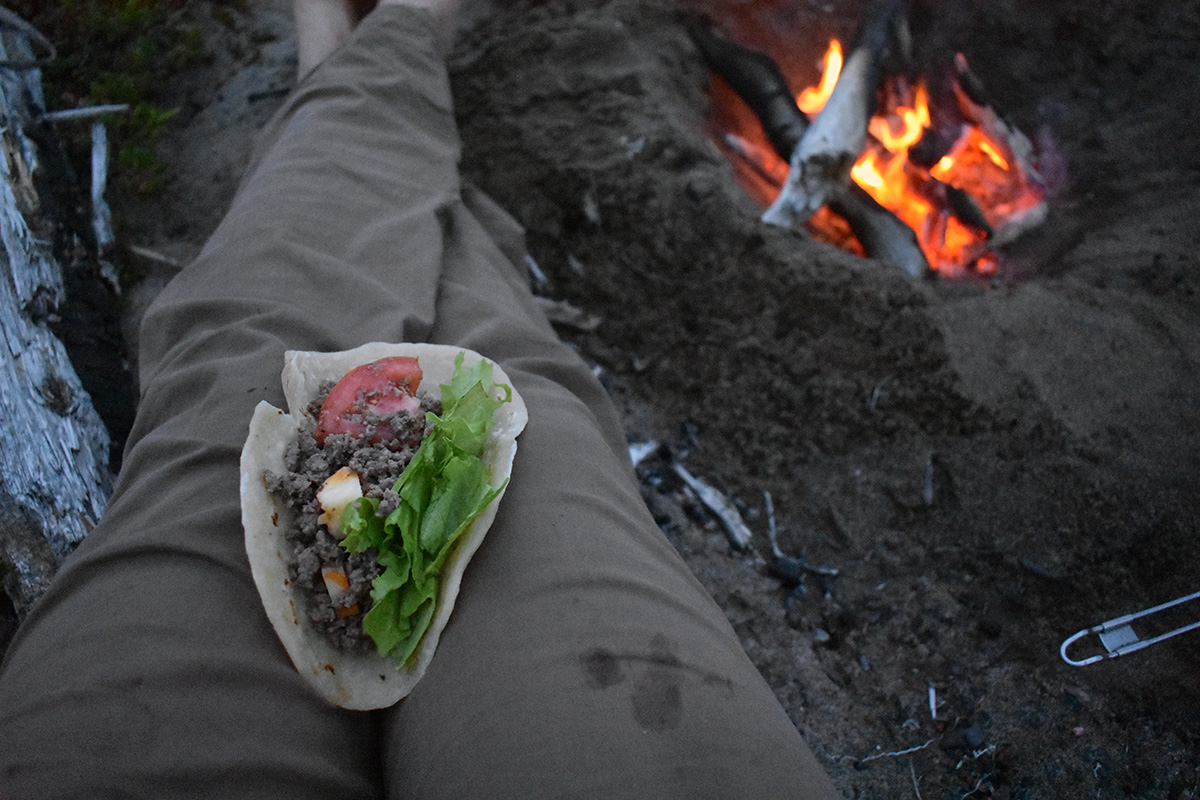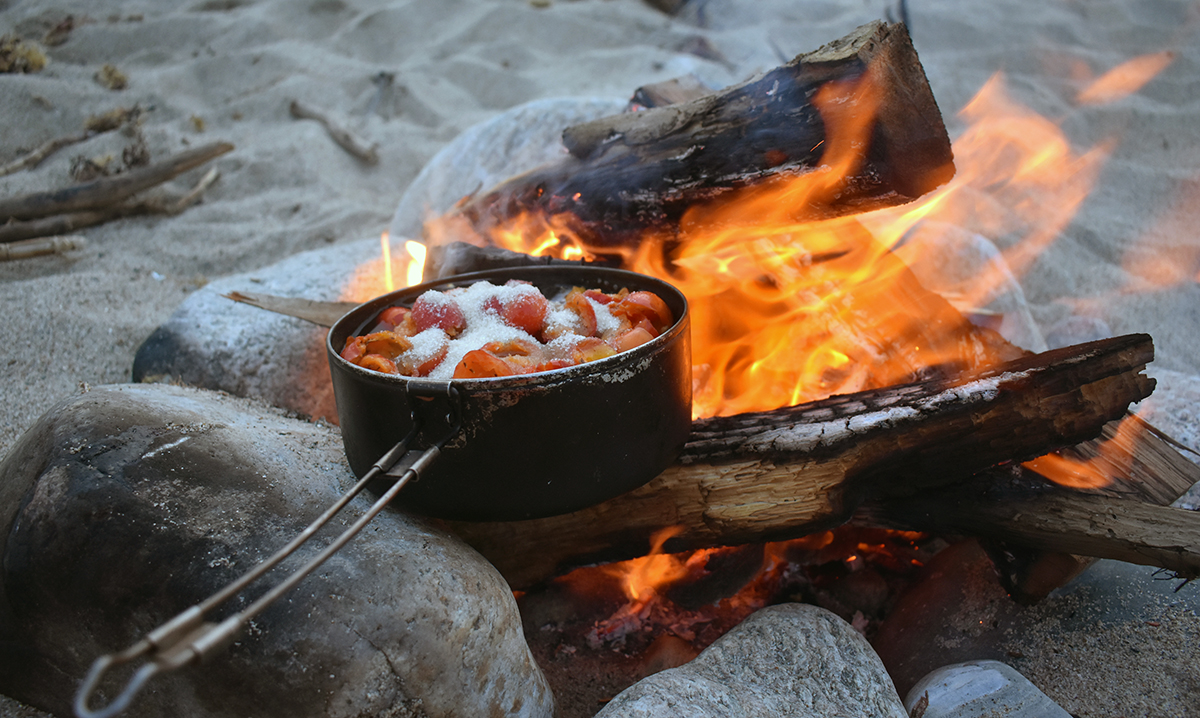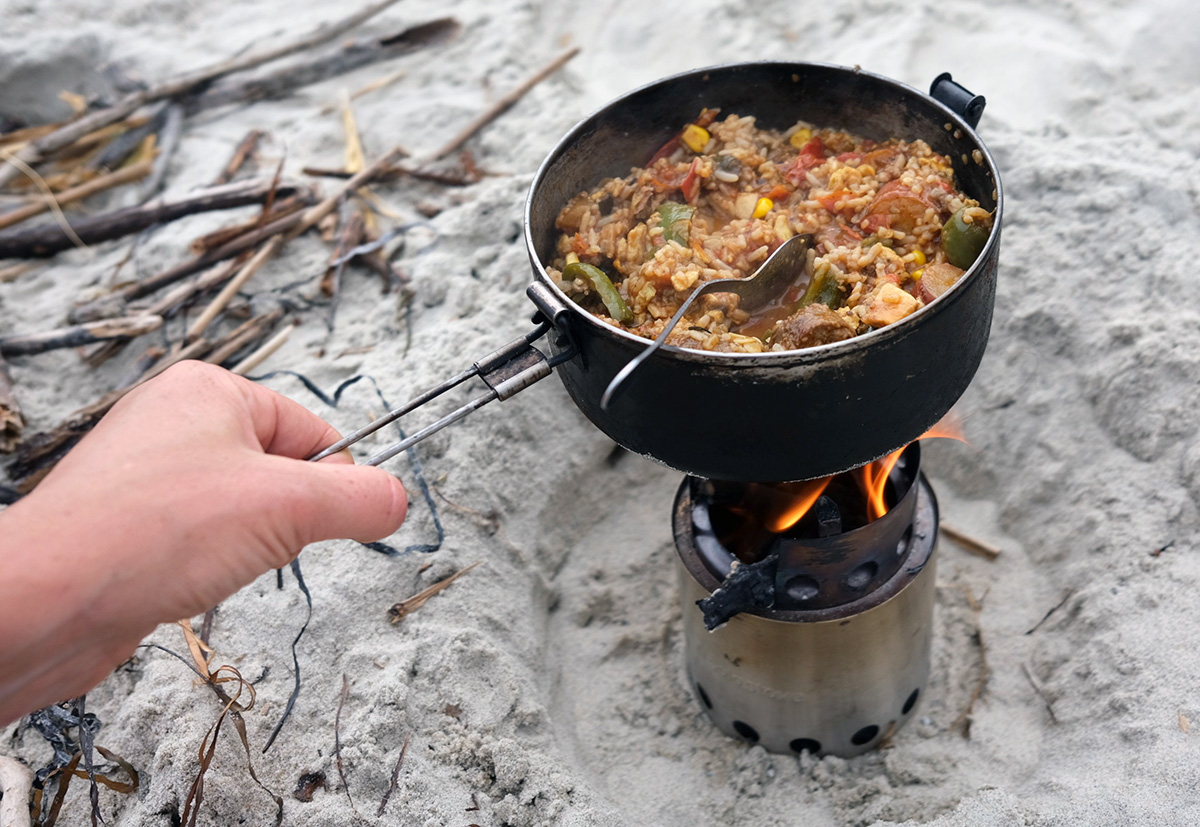How to Cook with Fire
When I was 23, I bought a one-way ticket to Alaska with the idea that I would ride south for a while. I arrived in Anchorage with my bike and four overloaded bags of gear. After about a week, I stopped outside a post office, took everything out of my bags, and assessed the situation. Did I really need that extra fleece? And all those paperback books? I stared down at my camping stove with its cumbersome fuel canisters. I stuffed the stove and a few pounds of extra gear into a cardboard box, mailed it to my parents’ house, and kept riding south.
Over the next three months, I ate a lot of bagels, pickled eggs, peanut butter, and cheese. Whenever I had the opportunity, I built a campfire and toasted sandwiches or grilled vegetables. Traveling without a stove meant that I always had to plan cold meals or cook food over a fire. After 3,500 miles of pedaling, I rolled into San Francisco with stronger muscles and a lot more campfire skills.
Since then, I’ve only rarely traveled with a gas stove. I usually prefer to eat cold foods or cook on a fire. I enjoy the simplicity, the functionality, and the magic of fire. And I love zipping through towns without having to stop and look for fuel canisters!
Cooking on fire requires time and patience. For it to be worthwhile, you have to embrace the whole process. Gathering sticks and kindling becomes part of the larger ritual of food preparation. Seeking out the right size and type of wood leads you to build a relationship with trees. Fire is both powerful and delicate, and it’s the fullness of the process that makes it so special.

Of course, there are plenty of times that I’ve cycled into camp, looked around at the rain-sodden forest, and kicked myself for not bringing a stove. It’s fun to wax poetic about campfires in good weather, less so when you’re standing in a puddle. But even on those days, fire always reminds me of its specialness. After I’ve put up the tent, filtered the water, gathered the wood, and finally coaxed new flames into being, I get to sit back and feel the unique warmth and peace that only a fire can bring. It wins me over, every time.
When I’m bike camping or backpacking, I usually carry a steel pot, a spoon, a knife, and a lighter. I’ve used the same MSR steel pot on every camping trip I’ve been on for about seven years now, and it’s still going strong. This pot is awesome because it has a lid and a sturdy, folding handle. The lid doubles as a plate, and the whole thing clamps together like a lunchbox. I’ve had lots of gear come and go, but this pot seems to be invincible.
In areas where fires are allowed, I like to build my campfire in an existing fire ring, on sand, or on the edge of a river. This article explains how to select a safe fire site and build a campfire. Please take the time to understand fire safety and local fire regulations before you light one up. It’s much easier to light a safe campfire or just eat cold food than it is to stop a wildfire that’s running with the wind.
I often challenge myself to build the smallest fire possible with the least amount of wood. Small fires take less time to build and are easier to put out. When I build my fire, I put three rocks on the ground to act as pot stands. I start the fire in the middle of the rocks, and then just set my steel pot on top. Boiling water in a metal pot is one of the easiest ways to cook on fire. This is a great option for dehydrated foods like rice and beans, pasta, or other backcountry meals.

If I’m not boiling water, I’m probably toasting something. There’s nothing like a fire-toasted bagel with melted cheese to brighten your day. It’s really as simple as sticking your bagel and cheese on a rock near the fire and spinning it around with a stick until it’s toasted. You can roast vegetables by skewering them on sticks and holding them over the flames. Some people carry bits of tin foil with them to wrap up veggies and roast them on coals.
Meat is always a treat on long adventure cycling trips. I usually look for frozen meat so its still cold when I get to my campsite. I cook ground beef in my steel pot and use it in burritos. Pre-cooked meats like sausages are nice and easy — I just warm them up in my pot or skewer them. For raw sausages, I boil them first and then roast them a little in the flames.
Every now and then I have a food craving and end up cooking large amounts of strange things. Once in Newfoundland, I cooked a pound of bacon and saved the lard in my pot lid. It congealed nicely, and I used little spoonfuls as cooking fat for the next week. Another time in Massachusetts, I mixed sugar and rose hips together and boiled them down into jam. You can cook just about anything on a campfire.

The bottom of my pot does get sooty when it’s in the fire, so if I’m not able to rinse it, I just store it in a plastic bag. In general, I consider the inside of the pot to be “self-cleaning.” I use a piece of bread to wipe out the inside, and then eat the bread. If I’m in a place where I can give it a proper wash, I’ll do that too, but otherwise I don’t worry about it. Ninety percent of the time, I just use the pot to boil water so it stays pretty clean on its own anyway.
If I’m on a long bike trip and don’t know where I’ll end up that night, I never assume that I’ll be able to make a fire. In those cases, I always pack foods that I can eat cold if I need to. This is important. You never want to be in a position where you feel forced to build a fire even if there’s no suitable place. A peanut butter sandwich is a great Plan B.

Over the last year, I’ve started using a wood-fueled camp stove called Solo Stove Lite. This tiny stove burns hot and fast with a shockingly small amount of wood. It’s double walled, doesn’t burn the ground, and can be used on top of a picnic table (or just about anywhere). This article has a nice overview, plus a list of other wood-fueled camp stoves. This article has another good overview, plus suggestions for stoves that burn alternate fuels (other than propane). I think wood-fueled stoves are a great choice for folks who love cooking on fire and want to do so more efficiently and in a wider range of places.
Fire is not the easiest or fastest mode of cooking, but it’s often the lightest, cheapest, and most ecological. I’d also argue that it’s the most magical. Wherever you go, you won’t be the first person to light a campfire on that land. Fire connects us to a legacy of origins and ancestors. When handled with care, it’s a peaceful, regenerative force of nature. It also makes a wonderful pot of hot soup.

